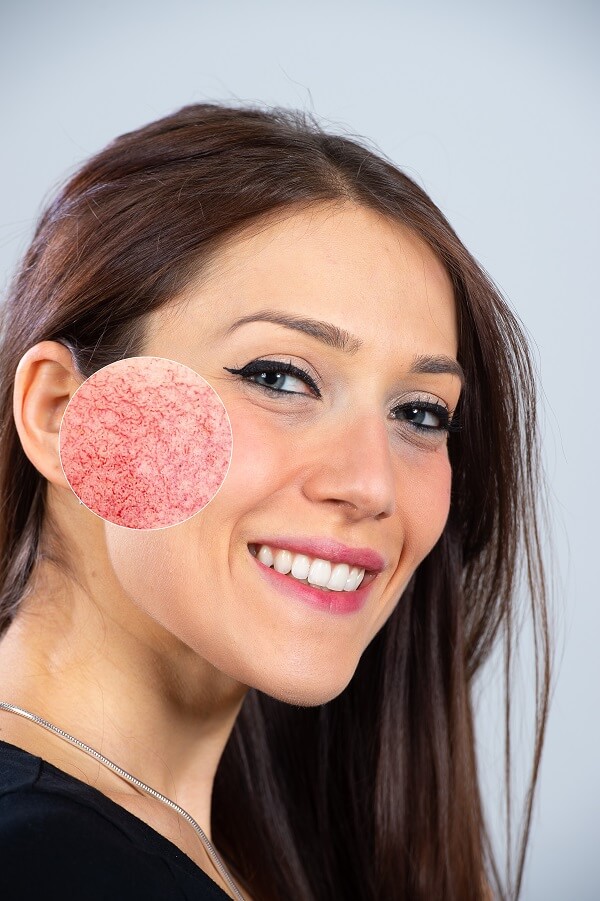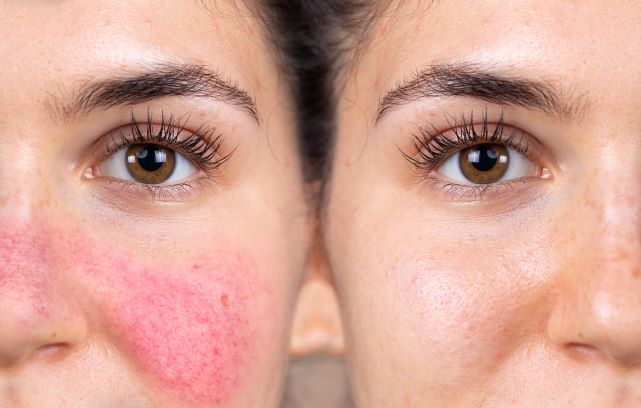For patients who struggle to manage rosacea and its many side effects, laser treatments may be a good solution to help decrease the severity of flare-ups and reduce the length of time people experience symptoms during flare-ups. According to Dr. Jacqueline Watchmaker of U.S. Dermatology Partners in Phoenix and Scottsdale, Arizona, “Rosacea can be difficult to manage. With appropriate care, most people can minimize the number and severity of rosacea flare-ups, but some patients can struggle to get their active flare-ups under control. For those who have very severe flare-ups or who struggle to achieve clarity with traditional treatment options, laser therapy may be the ideal solution.” In this blog, Dr. Watchmaker will discuss the best laser treatment for rosacea and how laser therapy can benefit people with rosacea.
What Is Rosacea & How Does Laser Treatment Help?

Rosacea is actually an umbrella term that refers to one of a range of chronic, inflammatory skin conditions, including:
- Erythematotelangiectatic Rosacea – Usually called ETR, this type of rosacea is the type most people are familiar with that causes skin redness and inflammation that may look like flushing or blushing skin.
- Papulopustular (acne) Rosacea – In addition to the symptoms common among those with ETR, patients with papulopustular rosacea often experience acne-like breakouts. Additionally, sufferers may develop areas of thickened skin called plaques.
- Phymatous Rosacea – People with this form of rosacea will typically experience symptoms of the other two types of rosacea. However, the thickened skin may be more severe for those with phymatous rosacea. Specifically, the skin around the nose may become thick, mishappen, or bulbous.
- Ocular Rosacea – As the name suggests, ocular rosacea impacts the eyes. This form of rosacea develops in the eyes and on the surrounding skin. It causes bleary, watering eyes, irritation, inflammation, and light sensitivity. Additionally, patients may experience more common rosacea-type symptoms, including redness and visible blood vessels on the skin around the eyes.
How Does Laser Treatment for Rosacea Work?
One of the most common symptoms of rosacea is the increased visibility of blood vessels in the skin. Some laser treatments use controlled heat from light wavelengths to diminish the visibility of blood vessels. Certain lasers can be used to decrease the redness of the skin while other lasers can be used to decrease the thickening skin that can accompany rosacea.
Types of Lasers Available for Rosacea Treatment?
According to Dr. Watchmaker, “Laser therapy for rosacea can be extremely beneficial, but not all treatments that use lasers and lights are right for every person with rosacea. Your dermatologist will help you find the right laser therapy plan to address signs of rosacea as needed.”
Some of the laser and light treatment options for rosacea may include:
- Pulsed-Dye Lasers – The pulsed-dye laser is ideal to address visible blood vessels and background facial redness. These lasers deliver bursts of light that selectively damage blood vessels while keeping the surrounding skin safe.
- CO2 Lasers and erbium YAG lasers– These lasers are typically used to repair or reshape skin that has been damaged by rosacea. This may be a great option for patients who have scarring or excess skin buildup due to chronic rosacea flare-ups. Specifically, CO2 and erbium YAG lasers are often used to address phymatous changes, which are thickened, bulbous areas of skin around the nose.
- Intense Pulsed Light Therapy (IPL) – Technically, this is not a laser treatment but rather a light treatment that uses several light wavelengths at once. The light is applied in pulses over the surface of the skin where it can damage blood vessels.
What Type of Laser Treatment for Rosacea Works Best?
When it comes to choosing the right laser treatments for rosacea, Dr. Watchmaker says, “No single treatment is right for every rosacea patient I see. It’s really important to talk to your dermatologist to find the ideal laser therapy option as well as to create an ongoing skincare plan to reduce the number and severity of rosacea flare-ups. While no treatment is right for every patient, research from the American Academy of Dermatology suggests that as much as 75% of rosacea sufferers will see significant symptom reduction in three or fewer laser treatments.”
Specifically, the following types of lasers may work best to address these specific symptoms of rosacea:
- Visible blood vessels –pulsed-dye lasers, IPL therapy
- Redness – pulsed-dye lasers, IPL therapy
- Inflammation – pulsed-dye lasers (in addition to topical creams)
- Skin thickening – CO2 lasers, erbium YAG laser skin resurfacing
Are There Other Options for Rosacea Treatment?
According to Dr. Watchmaker, “Laser therapy can be very effective for certain types of rosacea but often topical and sometimes oral medications are needed in addition to laser therapy”
Visit U.S. Dermatology Partners to Find Out More
If you’ve been diagnosed with rosacea or you’re looking for a new treatment plan, the U.S. Dermatology Partners team would be happy to help you create a personalized treatment plan. Getting started is quick and easy. Simply take a few moments to complete our online scheduling request form. Once our local dermatology office hears from you, the team will be in touch to finalize the details of your visit.
Find a location near me
or


